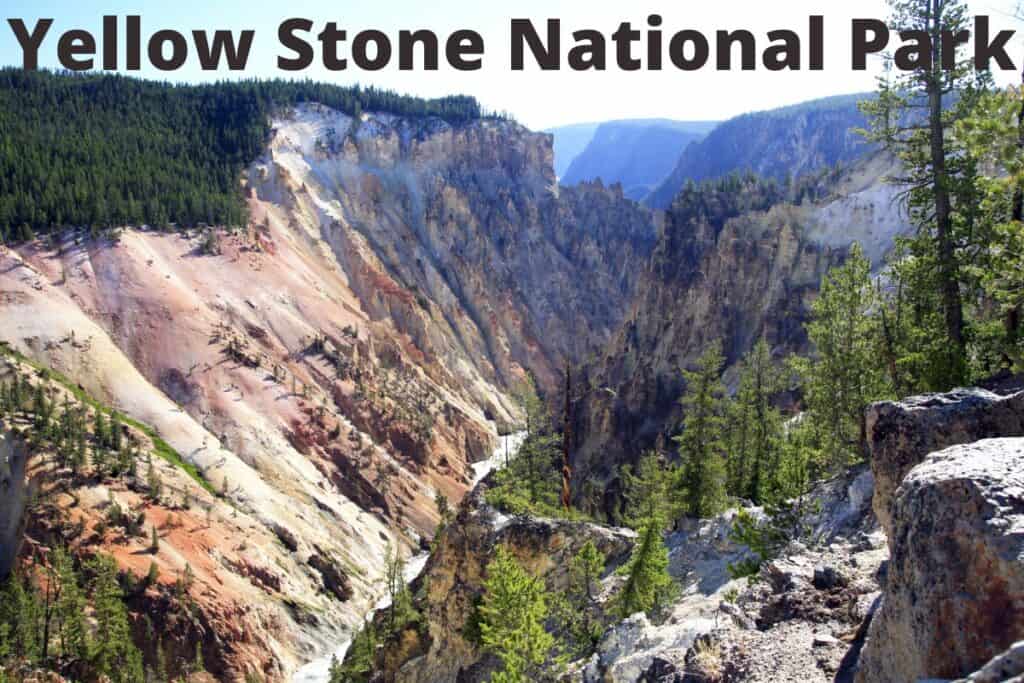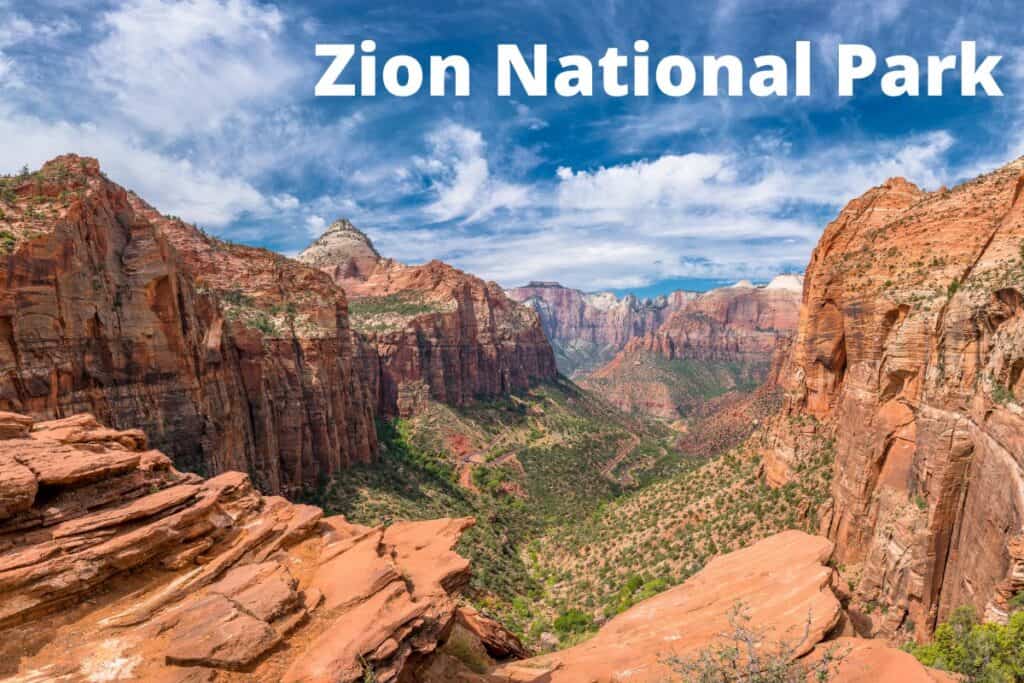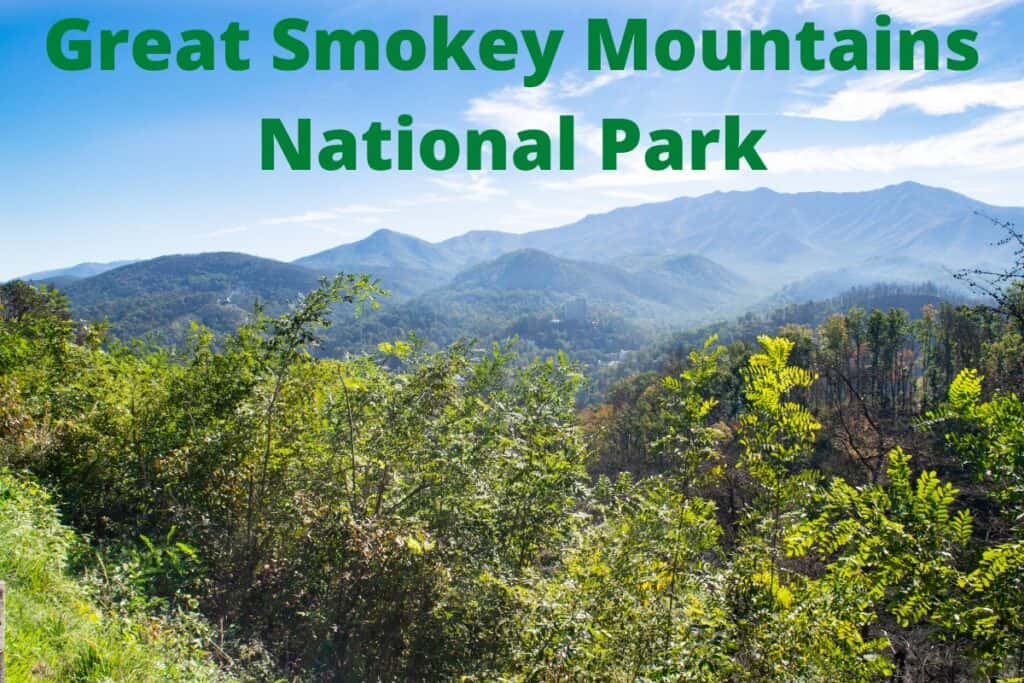Many people plan an RV itinerary that’s based around seeing the greatest national parks in the country. It would be very unfortunate for you to be barred entry into one of those parks because your RV is too big. What size should your RV be if you want to get into national park campsites?
The best RV size for national park campsites is 20 to 30 feet, although some parks allow RVs entry even if they’re 40 or 50 feet long. A few national parks throughout the country don’t have limits on RV size, but these are few and far between.
If you want to learn what the best RV size is for visiting national park campsites throughout the United States, this is the guide for you. Ahead, we’ll present RV size limits for your favorite national parks so you can plan your itinerary!
What Is the Best RV Size for National Park Campsites?
When selecting the size of your RV, you have a lot of considerations in mind. You want a vehicle that can accommodate your friends or family (maybe both). It should be large enough to fit the amenities that bring you comfort as well.
If you go by the motto that bigger is better, that can leave you in a jam when it comes to traveling through the country’s national parks.
Many national parks are designed for RVs that are between 20 and 25 feet long, sometimes less. At 25 feet, you’re on the shorter end of the average RV length, which can go all the way up to 45 feet.
Yet 45 feet would be far too much for most national park campsites, although not as many as you might think!
We always urge RVers to contact the campground to confirm length restrictions before making reservations. We also recommend inquiring to see if they have pull-through sites for larger rigs which are much easier than back-in sites.
What Is the Largest RV Size Allowed in State Parks?
Which must-see state park do you have on your itinerary? Is it Yosemite? Kings Canyon? Yellowstone? Perhaps even Grand Teton National Park?
This section will take you through the multitude of exceptional national parks in the country and discuss the RV length limit for each.
Related Reading: Choosing the Ideal RV Length for Fitting into Campgrounds
Yellowstone National Park
Across almost 3,500 square feet, Yellowstone National Park houses volcanic hotspots and plenty of wilderness. Indian Creek limits RV lengths at 35 feet; your RV can be up to 40 feet long and you should be permitted access elsewhere in the park.

Yosemite National Park
Since 1864, California’s Yosemite National Park has been a premier park for seeing sizable sequoia trees and stunning vistas. RVs are capped at 40 feet long and travel trailer/towing vehicle rigs no more than 35 feet. You can only use one of eight campsites if your RV is 40 feet.
Sequoia National Park
If you’re passing through Kings Canyon National Park in Tulare County, take some time to visit California’s Sequoia National Park too. Situated in the Sierra Nevada mountains, you’ll drink in beautiful sights. Just make sure your RV is about 24 feet long if you want to use a campsite on the grounds.
Saguaro National Park
A dual-sectioned national park in Tucson, Arizona, Saguaro National Park has plenty of native saguaro cacti across its desert-like grounds. You won’t be able to get into the Bajada Loop Drive or the Cactus Forest Drive if your RV (or trailer rig) is longer than 35 feet.
Rocky Mountain National Park
Including alpine tundra, forests, and lots of mountains, Rocky Mountain National Park in Colorado is a must-see stop. The park is also famed for the Old Fall River Road and the Trail Ridge Road. RVs are limited at 40 feet, which is a generous allowance.
Olympic National Park
Washington State’s Olympic National Park is rife with backpacking and hiking trails, forests, and varied ecosystems. Although the allowance for RVs at this national park is 35 feet, many of the park’s campsites accommodate RVs that are 21 feet or shorter.
North Cascades National Park
Here’s another Washington national park that’s probably on your shortlist, North Cascades National Park. The park spans over 500,000 acres! Your RV cannot be longer than 36 feet if you hope to camp here.
Zion National Park
From Jurassic-aged rock to steep cliffsides covered in a distinguishable red, there are lots to see at Zion National Park in Utah. RVs under 19 feet are required to enter Lava Point Campground. Larger RVs over 40 feet can drive through and stay at other areas of the park.

Mount Rainier National Park
Yet a third Washington park, Mount Rainier National Park showcases the stunning Mount Rainier, which is over 14,000 feet tall. In the northeast section of the park called White River, RVs cannot exceed 27 feet long. In the Cougar Rock section towards the southwest, the limit is 35 feet.
Mesa Verde National Park
Preserving history that dates back over 700 years, Mesa Verde National Park in Colorado includes the Cliff Palace and other Ancestral Puebloan cliff dwellings that you have to see with your own eyes. The park has a very inclusive RV size policy of 46 feet long at most.
Mammoth Cave National Park
If you want to see some of the longest caves on the planet, then you have to visit Mammoth Cave National Park in Kentucky. RVs can be no bigger than 38 feet long, and only eight people can stay in your RV at once.
Lassen Volcanic National Park
Northern California’s Lassen Volcanic National Park includes the Devastated Area and Bumpass Hell with mud pots that still bubble. With 179 campsites in all on the sprawling national park, RVs are capped at 45 feet long.
Kings Canyon National Park
Boasting caverns, huge sequoias, canyons, foothills, and mountains, Kings Canyon National Park in California has it all. You will need a much smaller RV to explore this national park in its entirety, as the limit on many roads in the park is 22 feet long.
Joshua Tree National Park
One of the most renowned national parks on the planet, Joshua Tree in southern California between the Mojave Desert and the Colorado Desert includes hiking trails and beautiful views of Coachella Valley. Most campsites on the grounds limit your RV size to no greater than 25 feet long.
Guadalupe Mountains National Park
The Guadalupe Mountains National Park in Texas showcases the Salt Basin Dunes, the Chihuahuan Desert, and the Guadalupe Peak Trail. The park has 13 campsites in all, but your RV cannot be over 55 feet if you hope to access them.
Great Basin National Park
White Pine County, Nevada’s Great Basin National Park showcases some of the most beautiful sites of this part of the country. You can enjoy the mountainous Wheeler Peak Scenic Drive or the Great Basin Desert with the South Snake mountains. The RV length cap is 24 feet.
Grand Teton National Park
Acclaimed for its mountains, Grand Teton National Park in Wyoming includes 310,000 expansive acres to explore. The Gros Ventre Campground, Colter Bay Campground, and Headwaters Campground allow RVs up to 45 feet long. At the Lizard Creek Campground and the Signal Mountain Campground, the limit is only 30 feet.
Grand Canyon National Park
Grand Canyon National Park, which houses the revered Grand Canyon, is a must-see destination for many. If that’s true of you as well, then your RV should be between 30 and 50 feet long. Only one campground has room for 50-feet RVs, so smaller is better.
Great Smoky Mountains National Park
Between Tennessee and North Carolina is the Great Smoky Mountains National Park. Here, you can see wildflowers that bloom regardless of season as well as waterfalls, rivers, and streams. The upper limit for RVs at this national park is 40 feet long.

Glacier National Park
Housed in the Rocky Mountains in Montana is Glacier National Park, a park that’s 1,500+ square feet. As the name implies, Glacier National Park has its fair share of glaciers as well as hiking trails, mountainous roads, and the lovely Hidden Lake. Your RV must be no longer than 21 feet to camp out.
Everglades National Park
One of the largest national parks on this list, Everglades National Park near Florida is 1.5 million acres. Yes, you read that right! Between the Pine Flatwoods, sawgrass marshes, and coastal mangroves, you can see all nature of creatures here. RVs up to 45 feet are allowed on the campsites.
Denali National Park
If you’re passing through Alaska, then a few days at Denali National Park should certainly be on your agenda. With six million acres, Denali is even larger than Everglades National Park. You’ll need an RV under 40 feet for camping.
Death Valley National Park
You can reach the lowest point in North America at Death Valley National Park, which is between Nevada and California. Other features of this national park are Telescope Peak Trail, Badwater Basin, and Titus Canyon. If you’re staying at the Wildrose Campground, Thorndike Campground, or the Mahogany Flats Campground, your RV must be no larger than 25 feet long.
Canyonlands National Park
Utah’s Canyonlands National Park features mesas, deserts, canyons, and the Needles, which are rock pinnacles. Most of the campsites on the park grounds can fit RVs that are 28 feet long or under. If you’re staying near the Needles, a few campsites are designed for larger RVs.
Capitol Reef National Park
Also in Utah is Capitol Reef National Park, a desert-laden park with sandstone layers, the Chimney Rock pillar, the Hickman Bridge, Cathedral Valley, and the eponymous Capitol Reef. The park has access for RVs that are 27 feet long or less.
Black Canyon of the Gunnison National Park
A huge park with tall gorges and rocks that date back to the Precambrian Period, the Black Canyon of Gunnison National Park in Colorado is a sight to behold. Golden eagles, elk, and deer call it home. If your RV is 22 feet or shorter, you can pass through and stay.
Big Bend National Park
Over in Brewster County, Texas is Big Bend National Park. Encompassing parts of the Chihuahuan Desert as well as the Chisos mountain range, other features include the Langford Hot Springs, the Santa Elena Canyon, and the Ross Maxwell Scenic Drive. RVs up to 40 feet are allowed, but not all campsites have the space for vehicles of this magnitude.
Arches National Park
With over 2,000 sandstone arches, the appropriately-named Arches National Park in Utah by Moab includes the Landscape Arc, the Delicate Arch, and the Balanced Rock. Your RV can be no longer than 27 feet if you hope to stay here.
Acadia National Park
Last but certainly not least is Acadia National Park in Maine. This park is an amazing 47,000 acres and includes the east coast’s highest point, Cadillac Mountain. The RV cutoff limit at Acadia is 27 feet long.
These National Parks Have No Limit on RV Size
If you’re feeling a little hemmed in by some of the size requirements on the above-mentioned national parks, don’t stress. Although there aren’t many of them, the following parks do not restrict RVs by size. That said, campsite access is still first-come, first-served.
Theodore Roosevelt National Park
North Dakota’s Theodore Roosevelt National Park includes three separate sections in all. You can see the Scenic Loop Drive, the Painted Canyon, and the Little Missouri River. The starring attraction is the Maltese Cross Cabin, as President Roosevelt lived there for a while, hence the name of the park!
Shenandoah National Park
On the Blue Ridge Mountains in Virginia is Shenandoah National Park. Access part of the Appalachian Trail, the entirety of the Skyline Drive, or spot the Old Rag and Hawksbill mountains. Black bears are native here, as are squirrels, deer, and a multitude of unique bird species.
Gates of the Arctic National Park and Preserve
Alaska’s Gates of the Arctic National Park and Preserve spans the northern part of the state in the Brooks Range. If you’ve always wanted to visit the Arctic Circle, the Gates of the Arctic is a great place to make it happen.
Visit our RV Camping Page for More Great Info!
Final Thoughts
The permittable size of RVs for national park campsites varies. On the shorter end of the spectrum, your RV might be capped at 21 to 24 feet, with about 27 feet the average.
Some national parks are a lot more generous, opening their figurative gates to RVs up to 40 feet long and sometimes bigger.
No matter the size of your RV, there’s a national park out there with a campsite that has your name on it!
